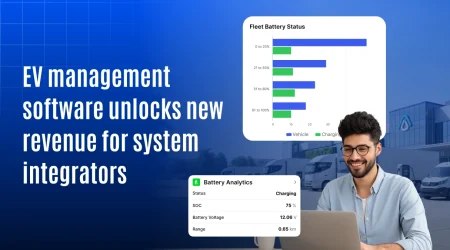Reducing Downtime in New Zealand’s Construction Fleets through Management Maintenance

New Zealand’s construction industry is growing steadily, with an expected annual output of NZD 50 billion by 2026, driven by housing, infrastructure, and public works projects. But behind every high-rise or road expansion lies a logistics engine powered by construction fleets and without proper downtime in these fleets can bring entire projects to a halt.
In 2025, forward-thinking companies across the country are adopting smarter fleet maintenance management strategies to minimize these costly disruptions. This goes beyond basic repairs; it involves real-time diagnostics, predictive servicing, digital fault tracking, and centralized decision-making.
Studies show that unplanned fleet maintenance can increase total fleet costs by up to 40%, and just one hour of downtime per vehicle can result in thousands in lost productivity and labor idling. For construction firms already operating on tight margins and timelines, downtime is not just an inconvenience it’s a business risk.
That’s why more New Zealand fleet operators are investing in proactive, tech-driven fleet maintenance systems to stay job-ready, avoid delays, and protect their bottom line.
The real cost of downtime in construction fleets
Downtime in the construction business isn’t just about a stationary vehicle, it’s about everything that slows down because of it.
Downtime causes:
- Project delays and contractor penalties
- Idle labour and crew rescheduling
- Missed milestones and revenue loss
- Emergency repair and towing expenses
- Lower asset lifespan due to misuse or neglect
Even if you have backup vehicles, losing one means redistributing loads, changing routes, and slowing on-site material movement all of which impacts delivery timelines.
Fact: Unplanned downtime can increase total fleet operating costs by up to 40%, according to global fleet studies.
What is maintenance management?
Maintenance management is a structured approach to keeping vehicles and equipment in optimal condition. It involves:
- Predictive and scheduled maintenance
- Systematic inspections and diagnostics
- Reporting, tracking, and analysing service data
- Managing downtime, parts, and service personnel
- Ensuring compliance with safety and operational standards
And when supported by fleet maintenance management software, it becomes easier, faster, and more accurate.
What’s causing downtime in your construction fleet
Understanding what causes downtime helps prevent it.
These issues often occur because fleet managers are juggling too much without the right system to streamline maintenance schedules and real-time insights.
How fleet maintenance management software helps
Here’s how the right software reduces downtime and simplifies fleet oversight:
1. Real-time equipment monitoring
Track engine hours, battery voltage, oil levels, and other health metrics all live on a dashboard.
2. Automated maintenance reminders
Create service schedules by date, mileage, or usage hours. No more manual tracking or forgotten services.
3. Mobile fault reporting
Let drivers or on-site teams report issues instantly through a mobile app reducing time to repair.
4. Digital logs and history
Maintain full maintenance records for every vehicle. Great for audits, budgeting, and reselling.
5. Predictive alerts
Get notified before components fail based on analytics and patterns, not just time intervals.
6. Parts inventory and service tracking
Know what’s available, what’s replaced, and what’s due all in one place.
Benefits for new zealand’s construction companies
Implementing smart maintenance management isn’t just about preventing breakdowns, it’s about improving your entire operation.
With the right system, you can:
- Reduce unplanned downtime by 30–40%
- Increase fleet availability from ~80% to 95%+
- Avoid costly delays and improve project delivery rates
- Extend the usable life of each machine
- Get better ROI on your fleet investments
- Improve compliance with safety standards
Real-world example:
A mid-size fleet contractor in Hamilton introduced a fleet maintenance management system in early 2024. In six months:
- Equipment uptime improved by 13%
- Emergency breakdowns dropped by 42%
- Daily productivity increased with fewer reschedules
- Reporting and compliance documentation time was cut in half
Key features to look for in a fleet maintenance solution
If you’re considering a maintenance management system, make sure it includes:
- Custom service intervals
- Real-time alerts and fault diagnostics
- Mobile reporting for field staff
- Integration with GPS and fuel dataCustom reports and cost analysis
- Support for both light vehicles and heavy-duty equipment
Bonus if the platform is white-label-ready for system integrators or partners managing client fleets.
Why 2025 is the right time to act
- Construction projects are accelerating nationwide
- Cost efficiency is under the spotlight
- Delays are harder to absorb in a competitive market
- Digital adoption is rising in field-based industries
- New Zealand’s regulatory expectations around safety and compliance are evolving
Summary: managing downtime starts with fleet maintenance
Reducing downtime isn’t just a technical goal, it’s a strategic advantage.
With proper maintenance management and the right software, your construction fleet becomes:
- More efficient
- More predictable
- And more profitable
Fleet managers, contractors, and project leads across New Zealand are already seeing the difference and now it’s your turn to take control of your fleet’s performance.





